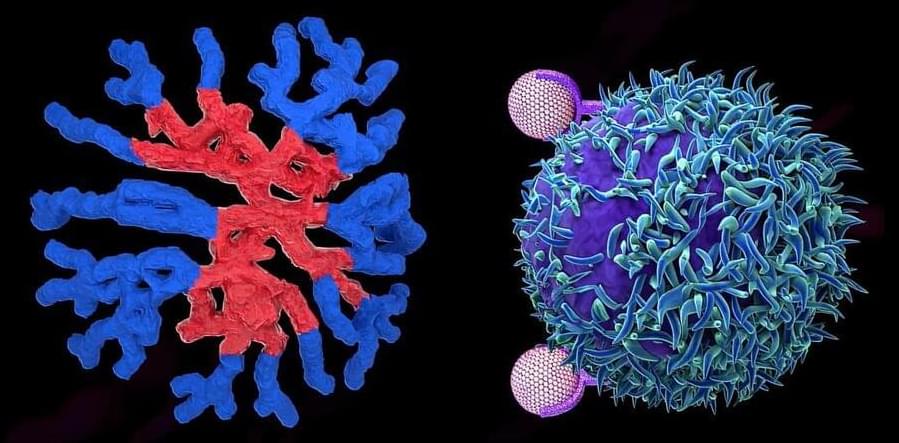Nvidia has been an investor favorite for AI, but other firms have been busy building their capabilities too. Matt Orton names one he says is “underappreciated.”
Retro Biosciences, a startup with $180 million from Sam Altman, has a simple and audacious goal: Add 10 good years to your life. And until now, we haven’t had a glimpse of its best ideas.
Contrary to reports of negative effects, postprandial insulin spikes are associated with improvements in a longitudinal study.
Patreon: https://www.patreon.com/daveshap (Discord via Patreon) Substack: https://daveshap.substack.com/ (Free Mailing List) LinkedIn: https://www.linkedin.com/in/dave-shap-automator/ GitHub: https://github.com/daveshap
#ManualLabor #CognitionServices #SyntheticMind.
The future of human labor in the age of AGI and automation, as discussed in the articles from Digital Habitats, suggests significant shifts in both manual and cognitive work.
Automation and AI advancements are predicted to take over a substantial portion of human jobs within the next 5 to 20 years.
Antibodies are used in many kinds of cancer treatments but have only been able to reach proteins on the outside of cancer cells—until now. According to a new study, scientists have designed antibodies that can barge into cancer cells and drag abnormal proteins out, ultimately slowing tumor growth in mice.
The approach is a novel way of targeting cancer-fueling proteins that are buried inside cancer cells, several experts said.
Most antibodies can’t get inside cells. Yet most cancer-fueling proteins are tucked deep inside cancer cells. One type of antibody, however, called IgA, can glide through certain cells like a ghost walking through a wall.
NCI researchers have found a persistent decline in rates of both smoking-related and non-smoking-related lung cancer deaths.
In the U.S., lung cancer death rates have declined for decades, primarily due to decreases in cigarette smoking. However, it is unclear whether rates of smoking-unrelated lung cancer deaths are also decreasing. If the rates are increasing, that may suggest increases in exposure to other lung carcinogens that need to be investigated. Meredith Shiels, Ph.D., M.H.S., senior investigator in the Infections and Immunoepidemiology Branch, and colleagues in the Biostatistics Branch, the Division of Cancer Control and Population Sciences, and Information Management Services, conducted a study to estimate trends in U.S. lung cancer death rates from 1991–2018. They found that both smoking-attributable and smoking-unrelated lung cancer death rates declined over this period. The findings were published in the Journal of the National Cancer Institute on December 9, 2023.
Cancer registries and death certificates do not collect the smoking status of every person diagnosed with or who died from lung cancer. Thus, to estimate trends in lung cancer death rates by smoking status, the researchers needed another way to determine the age-specific trends in lung cancer deaths attributed to smoking, and unrelated to smoking. They estimated age-specific annual percentage of lung cancer deaths that could be attributed to smoking using smoking status data from the National Health Interview Survey linked to death certificate data. These population attributable fractions were then multiplied by national data on lung cancer mortality to estimate trends over time in smoking-attributable and smoking-unrelated deaths. The researchers found that the fraction of lung cancer deaths attributable to smoking decreased from 82% in 1991 to 75% in 2018. Over this same period, smoking-attributable lung cancer death rates declined 2.
Adam Stern is Founder and CEO of Infinitely Virtual, provider of cloud technology solutions, based in Los Angeles. Twitter: @iv_cloudhosting
Back in the 1960s, when the U.S. faced off against the Soviets, MAD Magazine initiated a snarky proxy war in the form of a recurring comic strip that pitted two animated spies attempting to outsmart each other. In “Spy vs. Spy,” there were no permanent victors.
Fast forward to the ChatGPT generation. In cybersecurity, it’s AI vs AI now, and the black-hatted figure versus the guy in the white hat is no longer as binary as it once was.
Before delving into the prospects of the Fifth Industrial Revolution, let’s reflect on the legacy of its predecessor. The Fourth Industrial Revolution, characterised by the fusion of digital, physical, and biological systems, has already transformed the way we live and work. It brought us AI, blockchain, the Internet of Things, and more. However, it also raised concerns about automation’s impact on employment and privacy, leaving us with a mixed legacy.
The promise of the Fifth Industrial Revolution.
The Fifth Industrial Revolution represents a quantum leap forward. At its core, it combines AI, advanced biotechnology, nanotechnology, and quantum computing to usher in a new era of possibilities. One of its most compelling promises is the extension of human life. With breakthroughs in genetic engineering, regenerative medicine, and AI-driven healthcare, we are inching closer to not just treating diseases but preventing them altogether. It’s a vision where aging is not an inevitability, but a challenge to overcome.
What if AI could tell us we have cancer before we show a single symptom? Steve Quake, head of science at the Chan Zuckerberg Initiative, explains how AI can revolutionize science.








